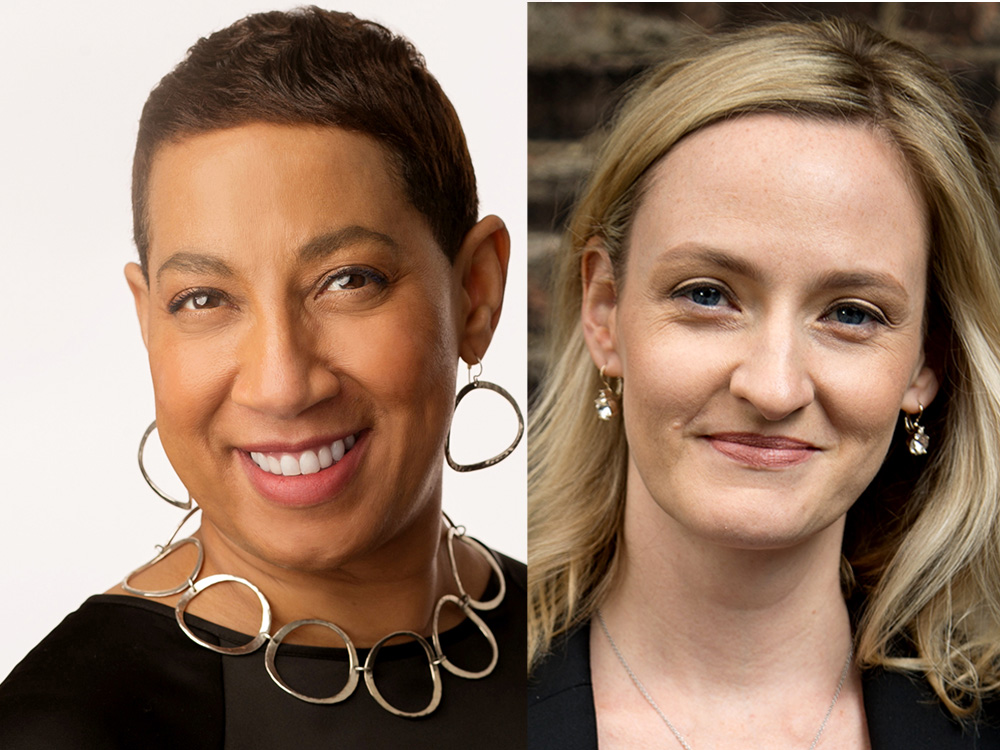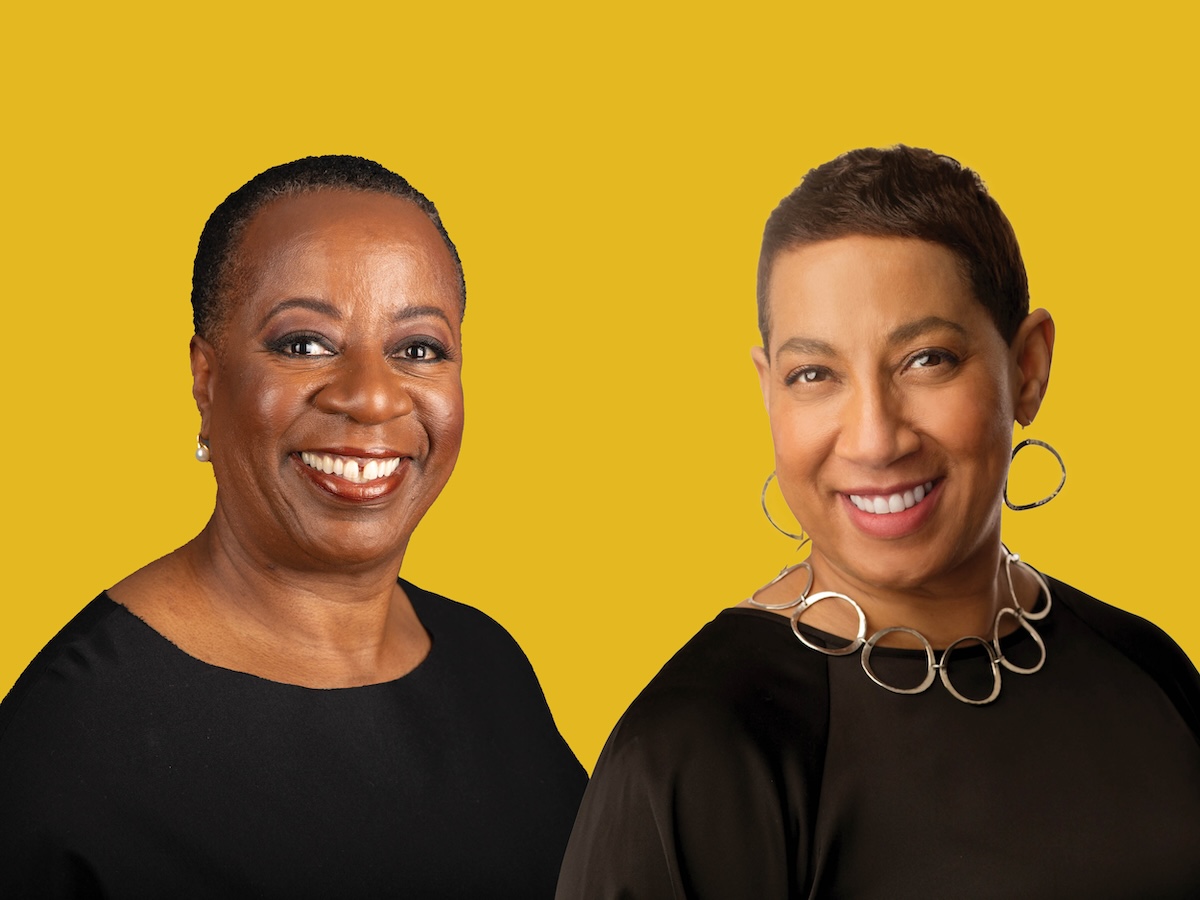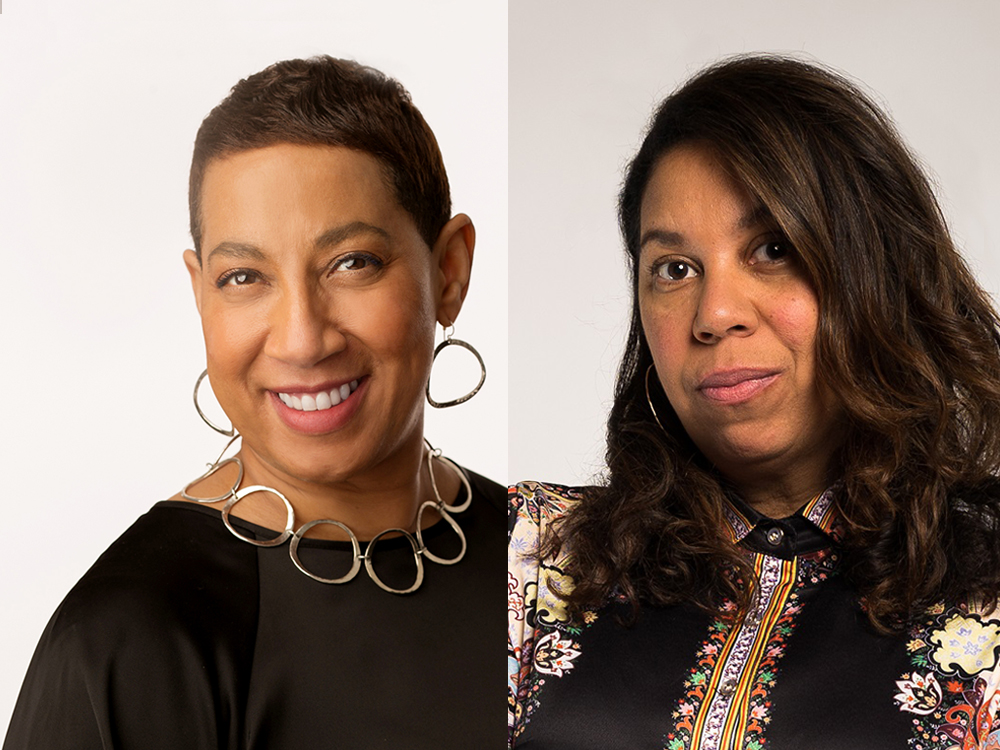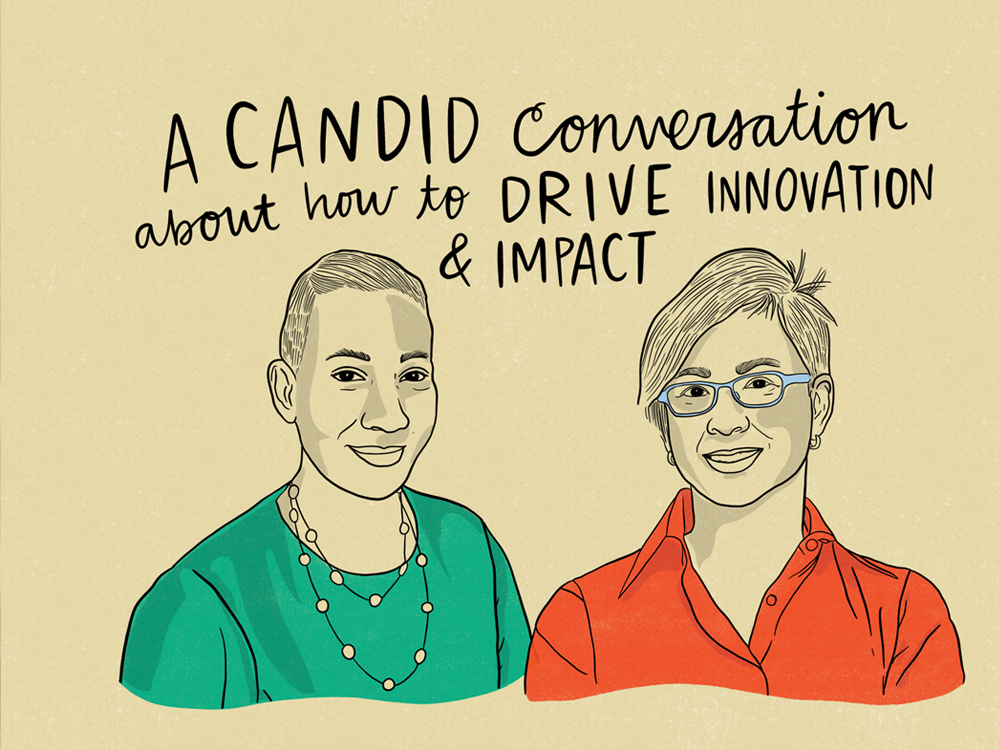
Since its launch, GivingTuesday has been led by Asha Curran, the former chief innovation officer and director of the 92nd Street Y’s Belfer Center for Innovation & Social Impact. As CEO, she has transformed the organization into the foremost champion for the global diffusion of radical generosity, or the idea that the wellbeing of a neighbor or a stranger is just as important as that of our own loved ones.
In this installment of our ongoing CEO:CEO conversation series, PEAK President and CEO Satonya Fair and Curran exchange their perspectives on philanthropy’s role in the radical generosity movement.
Fair: If you could wave a magic philanthropy wand, what would be different for our sector?
Curran: I would erase the power dynamics between grantmakers and nonprofits that I think are unproductive and often hinder the best possible relationship outcome, which is that of thought partners. These power dynamics are not the fault of the individual grantmaker. Rather, it is the system that has put those dynamics in place. And when two human beings who are intelligent and who are passionate about the same mission begin to speak to each other with that context around them, it can be difficult to make progress. I’m very fortunate to have had true thought partnerships with funders.
Fair: And if those power dynamics are no longer present, what would you want the sector to look like?
Curran: You would see more of an abundance mindset on all sides, because those power dynamics are also part of the scarcity mindset so many of us live in day to day. When you rely on grants, and you’re always thinking about how you’re going to get the next one, it can be hard to prioritize experimentation, taking risks, and innovating.
Fair: That resonates so deeply for me having spent much of my career in the nonprofit and philanthropic space. How would it be at PEAK if our conversations began by coming together with other organizations and thinking about how we add value to each other?
With that in mind, what else do we need to build momentum for transforming the sector? What can we do more of as a collective?
Curran: When we embrace an abundance mindset, when we think of generosity not as a finite resource but an infinite one, we can begin to think of ourselves as the innovators we actually are. If we had enough resources to think less about the day-to-day concerns, then we could start dreaming big and focusing on linking arms to do the work together.
There are so many different beliefs represented within the GivingTuesday movement, but it works because the part of the mission that we share is imagining a world that is radically more generous than what it is today. For the sector to transform, it needs to focus on where missions overlap and then make bold progress. However, while most people who work in this sector are altruistically motivated, barriers prevent them from thinking big, and things are only getting worse.
Fair: I challenge people to take in what you said and wonder about how to lead sector shifts. You have to shift your mindset in order to answer the call to action.
Curran: One massive challenge is how lonely it can be to do that work. We all should feel like we have community around us—because there truly are so many people working to make positive change—but we often don’t. So, learning to speak with a collective voice that focuses on shared missions is not only more effective, it’s a more joyful way to do the work.
Fair: This is especially true for nonprofits trying to do something different. It can feel like the worst thing in the world that you’re drawing outside the lines. PEAK has felt that at times when we have a point of view that comes from deep listening to hundreds if not thousands of voices over time, and that doesn’t always align with in-the-moment inputs we receive. And when we present that new idea, the community sometimes responds with, “That’s not what we asked for,” or, “We’re not ready for that.”
And you have given so much to the GivingTuesday movement over the years. You recently wrote an article for the Stanford Social Innovation Review where you talked about effusive altruism, which made me wonder: What’s philanthropy’s role in supporting a radical generosity movement?
Curran: There are three parts to the GivingTuesday movement: an incredible grassroots community and localized leadership; our organization, which is the nonprofit that supports that huge community; and the people who give us funding to make that work possible. That’s quite beautiful and in proportion—each form of giving enables the other forms in a feedback loop.
There are people and institutions with a lot of money, and their investment in us shows that funding a movement is not funding chaos. We have incredibly structured self-organizing principles, and I hope that we’re showing that funding something new and different and sometimes frightening is really a good risk to take. And there are many grassroots movements that have lower-profile leaders who don’t have the access to big institutions. Funders need to seek them out rather than assume they’ll come to them.
Fair: As we go into this work every day, we have to remember that current nonprofit trends point to the fact that the majority of nonprofits are grassroots organizations. They don’t have 20-plus staff and a budget of millions.
Curran: If you are a small organization doing niche, community-centered work, you are a small voice trying to get the attention of people who have a lot of claims on their attention. But if you look around for others who are mission aligned and you build a community coalition of other leaders, you can drive social change because then you’re speaking more loudly, together, and are more likely to be heard.
Fair: If I’m a person or an organization that can bring resources, maybe some of those resources include the capacity to build that collective.
Curran: Yes! I see more coalitions being built. We have loads of sub-movements like Give for Domestic Violence or Latinx Gives or NativeGives or GivingZooDay—the list goes on and on. The whole purpose of them is to think about a unifying cause or identity rather than one small organization. And they are incredibly effective.
But what’s concerning is that we’re seeing the number of grassroots givers going down in the US. I think part of that is because nonprofits must be able to continuously engage people and inspire them to get involved.
Fair: PEAK feels that every day. We exist as a group of other philanthropy-supporting and -mobilizing organizations. We serve ourselves better finding those places where we can stay in solidarity and advance as a movement for sure. It benefits us and it definitely benefits the nonprofits that are then served and supported by philanthropy. And we often must use ourselves as that exemplar for how coalition building can make a difference.
While PEAK has a dedicated, activated community, what we say resonates differently when the message is an amalgamation of many voices collected over time. And that creates an easy way for a funder to see that synergy and the direction we’re going in.
Curran: It matters. And I’m glad you’re there.
Fair: You wrote an article about the current social unrest where you say that your bright light was, “the passionate adoption by millions of an overarching driving ethos of kindness and community care around the globe.” Since that article was published, some problems have intensified. What’s your bright light now, given current social and political dynamics?
Curran: Our vision and a mission to create a more generous world, and that continues to resonate with the sector. Since I wrote that article, GivingTuesday has grown by about 25 countries, and the passionate adoption of that mission only gets deeper and more radical as more people join.
Although we’re being torn apart by forces that are more powerful than we are, that core of goodness in people won’t change. I don’t lose hope because so many people wake up every day in far worse circumstances than mine, and they are relentlessly putting one foot in front of the other with optimism and with hope. My job propels me, and to be surrounded by people doing good and doing it joyfully is a huge blessing.
Fair: If I did not begin each day with optimism for myself, my family, my world, and for the sector, I wouldn’t get out of bed. As leaders in this sector, we have to hold on to something that brings more light and grace to the world.
I feel like the change agents we are trying to empower are telling the larger community to pay attention to what PEAK and GivingTuesday are doing. They’re the ones who amplify our work. As a result, we try to ensure that our work lifts nonprofit voices and funder voices in equal measure.
But our change work begins with individuals. That said, what stands out to you about the people who choose to work at nonprofits and foundations? How should we be tapping into this effusive altruism at that individual level?
Curran: Think about the people who make up civil society. They have a real passion for their individual missions and an emotional connection to the work. That also makes them vulnerable to poor treatment. So, everybody who chooses that path deserves the deepest respect, and funders should be asking themselves, “How can we get each one of these individuals to wake up in the morning with an abundance mindset, feeling appreciated and fairly compensated for what they’re doing?”
Fair: And it’s not a question of asking a nonprofit whether they are ready for your funding. It’s about asking an executive director and their staff, “Are you all okay? Do you have what you need to get up in the morning and be the person who’s the front-facing individual for this community?” When I worked for a nonprofit, I can’t remember if people ever asked me if we had what we needed and if we were okay as individuals.
Curran: Progress is being made toward large, multi-year grants becoming more of the norm. That needs to happen for nonprofit leaders to be okay because nonprofits should be attracting visionary leaders. And what makes a job attractive? For me, it is the ability to build, to dream, to experiment, to know that I can fail, and to learn from that failure.
What fascinates me about generosity, whether it’s of money or time or of spirit, is how generative it is. This is part of how I would define effusive altruism. It’s transformational, not transactional. Giving is never about the one minute that it takes to hand something to somebody else. It’s about all the things that happen because of that interaction.
Fair: And expressing generosity and creating those ripple effects is completely title agnostic. You lead from where you are on being generous, no matter what. People often will look to an organization’s leader, and while that person is important, generosity is the work of us all.
So, because we’re talking about people, who have been the most important people who help you to keep fighting the good fight?
Curran: It starts with my parents, who were total rule breakers and complete iconoclasts. I’m completely bougie compared to them, but I do have that break-some-rules DNA in me for sure.
And I would also mention the people who gave me hard feedback. I owe them so much because it’s a brave thing to give someone bold, constructive feedback. I have evolved by quantum leaps as a result.
And then I would say community. I have a circle of women leaders that I tap into and try to help in return as often as I can. We’re not built to do things alone, so I love getting their wisdom and then creating something better as a result.
And then I have a lot of friendships outside the sector. They remind me that it does not all begin and end with us and that there is a wider world beyond philanthropy.




